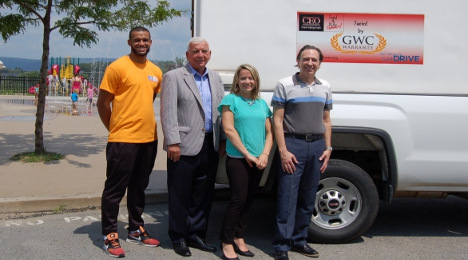As the company acknowledged an inquiry from the Consumer Financial Protection Bureau, Credit Acceptance leadership discussed its sales force during a good portion of its latest conference call with investment analysts.
Credit Acceptance shared as a part of its second-quarter finance report that the company expanded its sales team by “roughly” 20 percent year-over-year in an effort to broaden its active dealer network, which stood at 7,635 as of June 30. On the same date a year earlier, the figure stood at 7,181.
The company classifies active dealers as ones who have received funding for at least one contract during the quarter.
Chief executive officer Brett Roberts described the volume of active dealers joining the company’s network as “OK,” acknowledging the 910 stores to sign up during the second quarter marked a 13.9-percent improvement versus the same quarter a year ago.
“But sequentially we had a decline in active dealers,” Roberts said. “So I guess the goal, obviously, is to sign up more dealers than we’re losing. We didn’t do that in Q2, but we hope to do that in the future.”
The company also noted its dealer attrition rate deteriorated slightly in Q2, rising to 21.5 percent. A year earlier, the rate stood at 17.5 percent.
Credit Acceptance defines attrition according to the following formula: Decrease in consumer loan unit volume from dealers who have received funding for at least one dealer loan or purchased loan during the comparable period of the prior year but did not receive funding for any dealer loans or purchased loans during the current period divided by prior year comparable period consumer loan unit volume.
Roberts pointed out that Credit Acceptance’s current sales team is double the size of what it had been a few years ago, and the company is expecting to “increase it a little bit more.”
Roberts told conference call participants, “I think if you look at the last time we increased the sales force, it took us about two years to roughly double the sales force, and really, almost three years before productivity got to where it was before we started the expansion. So it was overall about a five-year process to double the sales force.
“We’re not trying to double it this time, and hopefully, we’ve learned a little bit from the first time. But it’s still more of a long-term driver than a short-term driver,” he continued.
With a larger team comes more expenses. Credit Acceptance reported for Q2 that its 11.9 percent or $6.5 million increase in operating expenses stemmed from an increase in salaries and wages expense of $2.6 million, or 8.6 percent. This was primarily related to our servicing function as a result of an increase in the number of team members along with an increase in sales and marketing expense of $2.5 million, or 21.0 percent, due to an increase in the size of its sales force.
Roberts explained that having a robust sales force can help Credit Acceptance navigate the challenges of a competitive auto-finance landscape.
“Our outlook is that we're planning on the current difficult environment lasting for the foreseeable future,” Roberts said. “And if that turns out to be too pessimistic, then that’s great. But that’s what we’re planning for. And so I guess we look at the numbers. We feel like our chances of growing are a lot better if we have a little bit larger sales force, so that's what we're working toward.
“We had two quarters of negative unit volume change. And this quarter was up, but it was only up 1 percent,” he continued. “I don’t think that the additions to the sales force really added much to that at this point. They’re very new. They’re still getting up to speed. And I think, again, the increase in the sales force is something that will pay off next year or the year after. Probably not this year.”
Overall performance
As Roberts mentioned, Credit Acceptance generated a 1-percent year-over-year lift in origination volume during the second quarter. The amount financed grew by a larger amount, 7.1 percent year-over-year.
“Dollar volume grew faster than unit volume during the second quarter of 2017 due to an increase in the average advance paid per unit,” the company said. “This increase was the result of an increase in the average size of the consumer loans assigned primarily due to an increase in the average initial loan term and an increase in purchased loans as a percentage of total unit volume, partially offset by a decrease in the average advance rate due to a decrease in the average initial forecast of the consumer loans assigned.
“While we were able to grow unit volume modestly during the most recent quarter after two quarters of declines, our overall progress in growing unit volumes has slowed considerably over the last six quarters,” Credit Acceptance officials continued. “This trend reflects the difficulty of growing the number of active dealers fast enough to offset the impact of the competitive environment on attrition and per dealer volumes.
“In addition, in response to the decline in forecasted collection rates experienced in 2016, we adjusted our initial collection forecasts downward during 2016. While the adjustments have been modest, we believe these adjustments have had an adverse impact on unit volumes,” the company went on to say.
All told, Credit Acceptance reported that its Q2 consolidated net income came in at $99.1 million, or $5.09 per diluted share, up from $84.9 million, or $4.17 per diluted share, for the same period in 2016.
After seeing the top-line metrics, the investment community pushed Roberts for some clarity on how Credit Acceptance portfolio vintages are performing in an effort to spot future trends.
I think that the clearest number to start with if you're trying to understand loan performance is the net cash flow change for the quarter that’s disclosed,” said Roberts, who noted that the company’s Q2 total net cash flow change was $8.8 million. “It’s a positive number, but it’s obviously a very small one.
“The total undiscounted cash flows that we’re attempting to forecast are somewhere around $5.8 billion,” Roberts continued. “So when you have an $8.8 million move, that’s basically flat.”
After the analyst rephrased the question, Roberts added, “Again, I think the main takeaway is if you’re looking at $5.8 billion in cash flows we’re trying to forecast, if you look at the results for this quarter or really over the last six quarters or even longer than that, the cash flows have been remarkably stable. So I think that's a good thing, and that’s really the main takeaway
CFPB matters
Credit Acceptance stated its quarterly filing with the Securities and Exchange Commission that the company now is contending with an inquiry from the CFPB along with ongoing actions involving the Federal Trade Commission and Maryland’s attorney general.
“As of June 2017, we were informed that the Consumer Financial Protection Bureau’s Office of Fair Lending and Equal Opportunity is investigating whether the company may have violated the Equal Credit Opportunity Act and Regulation B,” Credit Acceptance said in its SEC filing.
“We are cooperating with the inquiry and cannot predict the eventual scope, duration or outcome at this time. As a result, we are unable to estimate the reasonably possible loss or range of reasonably possible loss arising from this inquiry,” the company continued.
During the conference call, Wall Street observers asked Roberts to elaborate about what the CFPB inquiry is entailing.
“We don’t have a lot to add to what's in the (filing),” Roberts said. “The CFPB is fairly sensitive regarding disclosures of ongoing matters, so we try carefully to walk the line between our obligations to the SEC and to shareholders and the sensitivities of the CFPB. So I won’t try improve upon what we put in the (filing).”
The filing indicated that the inquiry from the FTC stems from Credit Acceptance allowing dealers to use GPS and starter interrupt devices while Maryland’s attorney general is looking into the company’s repossession and sale policies and procedures within the state.
A top expert at S&P Global Ratings gave two reasons why she now expects the Federal Reserve’s interest-rate policy to remain on hold through the rest of the year.
S&P Global U.S. chief economist Beth Ann Bovino explained that factors giving the Federal Reserve reason to pause on raising rates this year after it announces its balance-sheet normalization plan in September include continued “subdued” wage gains in the latest federal jobs report along with soft inflation data from the personal income report.
As a result, Bovino and the team at S&P Global Ratings project that as the Fed monitors the impact on the economy from its reductions in quantitative easing, analysts expect policymakers to raise rates three times next year (by 25 basis points each).
Earlier S&P Global Ratings expected the Fed to raise rates in December with three more rate hikes in 2018.
“The stronger-than-expected 209,000 job gains in July after healthy upwardly revised job gains in June will add to the Fed's belief that the labor market is on solid ground,” Bovino said.
“The 0.1 percentage-point drop in the unemployment rate to a 16-year low of 4.3 percent was because many people got jobs, and even more people entered the jobs market — a nice combination,” she added.
Despite solid job creation, S&P Global Ratings pointed out that wage gains are sluggish, with year-over-year wage gains at just 2.5 percent in June.
“Though in real terms, it’s still in positive territory,” the firm said. “Usually as the economy strengthens, employers have to compete for good workers, pushing prices and wages up. But we haven't seen that trend this time around, and, with job openings near a record high, the question may now be whether businesses are able to find the people with the right skills to fit their needs.”
Comerica Bank chief economist Robert Dye also dissected the connection between job and wage growth and how it might influence the Fed.
“The low unemployment rate suggests that wages and salaries will begin to accelerate, but so far that relationship has been weaker than expected,” Dye wrote in his latest commentary. “Slower gains in wages and salaries, plus tepid inflation data adds downside risk to the expectation of four more Fed funds rate hikes between now and the end of 2018.
“Today’s strong jobs report keeps the Federal Reserve on track to announce on Sept. 20 that balance sheet reduction will begin in October,” Dye continued while noting the Fed will see one more jobs report for August before the Federal Open Market Committee gathers again on Sept. 19 and 20.
In addition, S&P Global Ratings mentioned both the overall personal consumption expenditures (PCE) deflator and the Fed’s “favorite” inflation indicator, the core PCE deflator, excluding food and fuel, have drifted down to 1.4 percent and 1.5 percent, respectively, in June. Analysts explained that’s not only well below the 2 percent rate that the Fed would like to see, but inflation is also drifting in the wrong direction since it peaked in February.
While the Fed has indicated that the weaker pricing data is due to largely transitory factors, such as cellular usage, S&P Global Ratings recapped that Federal Reserve chair Janet Yellen hedged in her testimony to the House Financial Services Committee on July 12, noting that “readings on the CPI showed weakness in a number of categories, and is certainly something that we will be closely monitoring in the months ahead.”
That prompted Bovino to add, “We now expect the soft inflation readings will likely give the Fed reason to take a pause on interest-rate policy action until after they announce their balance-sheet normalization plans, with the next rate hike not until 2018.
“And two more to follow in the year, in our view,” she went on to say.
Bringing nearly 30 years of experience with him, Jerry Kroshus has been named president and chief executive officer of Auto Approve, a refinance company that specializes in helping consumers find the best possible vehicle interest rates through its national network of credit unions, banks and finance companies.
Kroshus began his career at GMAC in 1989 and has held senior roles at HSBC Auto Finance and Citigroup. He also spent the past nine years as president and CEO of PAR North America.
“Auto Approve is rapidly expanding and having Jerry lead the company as we continue to grow is a perfect scenario for us,” Auto Approve chairman Chad Latvaaho said. “Jerry has been a huge success wherever he has worked. He is highly respected and well-liked by everyone in the automotive industry and with his established relationships we look for Auto Approve to be taken to the next level under his leadership.”
“One of Jerry’s greatest strengths is attracting top talent and building strong organizations and he is already on his way to doing this for Auto Approve,” Latvaaho continued.
A frequent expert speaker during Used Car Week, Kroshus added, “I am very excited for the opportunity to lead Auto Approve and to work with Chad and his team in Maple Grove.
“We have several programs that will be unique to the marketplace and I cannot wait to get these initiatives launched,” Kroshus went on to say.
New auto finance analysis from Edmunds shows increases in term length and monthly payments. These metrics have made headlines for some time now as potential buyers focus on what they can fit into their budgets.
But Edmunds also noticed an increase in another data point that might help to illustrate the work completed within the F&I office and finance company underwriting department — a significant rise in down payments for both used- and new-vehicle deliveries.
According to information released on Tuesday, the average down payment connected with used-vehicle financing came in at $2,468 in July, representing a 6.6-percent lift year-over-year and a 12.7-percent climb during the past five years.
On the new-model side, the average down payment in July stood at $3,621, marking a 7.3-percent increase year-over-year and a 10.0-percent rise since 2012.
The down-payment movement is likely especially positive for the industry on the new-car side since Edmunds reported the average transaction price for a new vehicle was $34,558 in July, which is 2 percent higher than July of last year.
Kelley Blue Book spotted a similar development as analysts there reported prices for new models rose by $573 year-over-year to land at $34,721 in July.
“Once again, the declining sales of cars and the growing popularity of SUVs is driving up the average transaction price,” Kelley Blue Book analyst Tim Fleming said.
Edmunds also noticed that interest rates on new-vehicle financing fell to a six-month low in July as automakers ramped up summer's zero-percent finance deals.
The annual percentage rate (APR) on new financed vehicles averaged 4.77 percent in July, down from 4.96 percent in June. And 11.3 percent of purchasers who financed took advantage of zero-percent financing, up from 9.47 percent in June and 10.2 percent a year ago.
“Zero-percent finance deals are common in the summer, but car buyers can save even more this year,” said Jessica Caldwell, Edmunds executive director of industry analysis. “Even though interest rates were lower on average in July than at any time in the past six months, they’re still hovering at highs not seen since 2009.
“These higher interest rates make zero-percent financing a big carrot for dealers seeking to lure car shoppers,” Caldwell continued as Edmunds’ data also indicated days to turn new metal in July was 76 days, the highest since July of 2009.
Overall, interest rates on new-model financing have been higher in 2017 than in recent years. July’s average APR is up 5.6 percent year over year and is 14.2 percent higher than it was five years ago.
“In today’s declining market, every sale counts,” Caldwell said. “We anticipate automakers will continue to ramp up zero-percent finance offers as we get deeper into the summer sell-down season.”
For used-vehicle financing, the average APR in July stood at 7.46 percent, which marked a 2.3 percent rise year-over-year. However, the latest reading also represents a 7.7 percent slide since 2012.
And when it comes to contract term length, Edmunds reported the average for used-vehicle contracts in July came in at 66.90 months. For new-model financing, the July average stood at 69.45 months.
License plate recognition (LPR) software and data solutions provider MVTRAC on Tuesday announced the closing of growth recapitalization of the company with Bison Capital Asset Management along with changes to its top leadership structure.
MVTRAC shared Bison Capital’s investment will allow MVTRAC to accelerate its growth by expanding its sales and client service resources to enhance its technology suite and pursue acquisitions. With the investment, MVTRAC founder Scott Jackson will remain on as chairman of the board. The current MVTRAC president Luke Smith will be named the company’s senior executive officer.
MVTRAC has established a national network of agents utilizing MVTRAC’s solutions along with one of the largest LPR databases and analytics labs serving the auto financing market. By focusing on providing high-quality customer service, training and support for its innovative LPR solutions, MVTRAC can enable its customers to demonstrably improve their recovery rates, reduce days-to-recovery and increase their profitability.
Additionally, MVTRAC’s integrated business process management software can help its customers improve compliance with regulatory and client requirements by automating verification and documentation, and minimizing human contact in the auto location and recovery process. These advantages have allowed MVTRAC to maintain its impressive customer satisfaction and retention rates, as well as continue to scale its national network of agents and LPR database.
As a result, MVTRAC is uniquely positioned to service the portfolio requirements of the largest financial institutions in auto financing. Bison Capital’s growth investment will be used to help add new auto financing companies, expand its national network of asset recovery agencies and strengthen its portfolio of LPR technology and software solutions.
“Our management team is excited for the opportunity to partner with a supportive, forward-thinking investment firm of Bison’s caliber,” Smith said. “A common vision for the strategic direction and vast potential of MVTRAC was the primary driver behind our partnership, and we are confident that this alignment will significantly augment MVTRAC’s mission to provide our customers with high-utility, innovative LPR data and technology solutions across a multitude of platforms.”
Bison Capital partner Andreas Hildebrand added, “We are excited to be partnering with MVTRAC and its outstanding management team as they continue to enhance their innovative line of LPR products and services and expand their market presence.
“MVTRAC has established tremendous momentum in the LPR space and we look forward to helping it realize its full potential in this unique market,” Hildebrand added.
Jackson shared a similar positive outlook regarding the future of the organization that he founded.
“After 27 years of building the business to its current position as an industry leader with a rapid growth trajectory, it is time for me to begin enjoying life as a recovering workaholic,” Jackson said. “I have absolute confidence in Luke and the management team to expand on my vision for MVTRAC’s growth and consequently, it is our valued clients and agents that will benefit the most as MVTRAC continues to push the limits of LPR capabilities.
“While I will be stepping away from the daily operations of MVTRAC, the recapitalization will enable me to focus on M&A opportunities and expanding our dynamic intellectual property portfolio,” Jackson continued. “The opportunity to leverage Bison’s capital and resources to further accelerate MVTRAC’s growth is genuinely exciting.”
Voting unanimously, all nine members of the Federal Reserve’s Federal Open Market Committee agreed to maintain the target range for the federal funds rate at 1 to 1.25 percent during their meeting this week.
First Franklin Financial Services projected when the Fed might make its next move as the FOMC has two more opportunities this year coming in September and December.
“The committee will carefully monitor actual and expected inflation developments relative to its symmetric inflation goal,” the Fed said in its latest policy statement. “The committee expects that economic conditions will evolve in a manner that will warrant gradual increases in the federal funds rate; the federal funds rate is likely to remain, for some time, below levels that are expected to prevail in the longer run.
“However, the actual path of the federal funds rate will depend on the economic outlook as informed by incoming data,” the Fed added.
In determining the timing and size of future adjustments to the target range for the federal funds rate, the Fed reiterated that the committee will assess realized and expected economic conditions relative to its objectives of maximum employment and 2 percent inflation.
Meanwhile, two experts from First Franklin Financial Services, offered their prediction of what the Fed might do next. Brett Ewing is the firm’s chief market strategist and Lance Mitchell is its research director.
“The Fed continued its policy of not upsetting the apple cart when they didn’t give a press conference to explain things,” Ewing and Mitchell said. We believe that both the market and the Fed will be much more concerned with how the balance sheet normalization will go and we expect the Fed to begin the normalization sometime before the end of the year.
“It will likely use the remaining two press conferences to focus on questions the market may have,” they continued. “If the Fed can get the unwind off and running successfully without upsetting markets we expect Janet Yellen to step down as Fed chair and Gary Cohn to take over in 2018.
“The weak dollar continues to put the Fed in a goldilocks environment where the market isn’t concerning itself with rates,” Ewing and Mitchell went on to say. “And we don’t think there will be a rate hike until 2018; that’s the most likely scenario. Although December 2017 is in play, but still is less than 50 percent chance.”
Also of note, Treasury Secretary Steve Mnuchin didn’t specifically mention interest rates during his opening statement during a hearing hosted on Thursday by the House Financial Services Committee. But Mnuchin did allude to the positive economic trends that the Fed emphasized are what dictate upcoming actions.
“Years have passed since the financial crisis and this has given us time to see what has worked and what has not,” Mnuchin said. "The administration is committed to a robust financial system with a free flow of credit that fuels the engine of American growth. This means allowing community financial institutions to lend and small businesses access to borrowing. It means giving Americans the opportunity to make independent financial decisions, such as buying a home and saving for retirement.”
GWC Warranty, a provider of used vehicle service contracts and related finance and insurance products sold through dealers, has partnered with the Commission on Economic Opportunity (CEO) to sponsor a Food 4 Kids van.
CEO’s Food 4 Kids Summer Program makes nutritious food more available to at-risk children by delivering healthy meals and snacks to parks, playgrounds, libraries and other community sites throughout the summer months when at-risk children are not receiving meals at school. The van sponsored by GWC Warranty makes deliveries five days a week throughout Luzerne and Lackawanna counties in northeastern Pennsylvania.
The Food 4 Kids summer program served more than 64,000 meals in 2016 to children at 82 community sites throughout the region.
“Because schools often provide the only opportunities for income-limited children to receive nutritious food, Food 4 Kids helps ensure access to quality meals and snacks during the summer months,” GWC Warranty said.
An experienced industry executive whose career includes stops with Ally Financial and Exeter Finance is now with loan origination and servicing software solutions provider White Clarke Group.
White Clark Group announced this week that Nick Ockwell has joined the company as executive vice president of operations for the Americas.
Management insisted that the strategic addition of Ockwell to the leadership team is another move confirming White Clarke Group’s commitment and increased focus on serving clients and partners in North America.
White Clark Group mentioned Ockwell has a long track record of successful technology and operations leadership in financial services with companies including Ally Financial Services – Latin America and Exeter Finance.
“Both lenders are well known for their innovative specialty lending and use of best-in-class solutions,” White Clarke Group said.
This White Clark Group announcement comes less than a year after Five Arrows Principal Investments, the corporate private equity business of Rothschild & Co, made a significant equity investment in the group with the intent to scale the business globally.
“Our reputation for providing the highest standards of delivery and ongoing support to our clients is one we are committed to uphold. During this time of expansion, our operations and technology must be at optimal performance,” White Clark Group chief executive officer Brendan Gleeson said.
“Nick has proven his talent for preparing and scaling operations, and we are lucky to have him on the team for our next phase of growth,” Gleeson continued.
Ockwell added, “As a former White Clarke Group client, I have watched the impressive evolution from their roots as innovators and consultants, to global leaders in developing platforms that deliver the highest degrees of loan origination, servicing and floorplan finance performance for the top financial services companies in the world.
“I’m excited and honored to play a part in the next chapter of the White Clarke Group history,” Ockwell went on to say.
The management team at defi SOLUTIONS recently grew again with the addition of Glenn Munro as vice president of sales.
Officials highlighted Munro was an early investor in the company as his foundational, insider knowledge of the defi SOLUTIONS’ history and future roadmap, combined with his extensive experience in auto financing, give him critical insight into the ability of the company to meet the needs of the lending community today and well into the future.
Munro joins the team with more than 30 years of experience in all facets of auto financing, including sales, marketing, operations and finance. He was most recently the director of credit services for Porsche Financial Services. In addition, he has held leadership positions at companies such as The Hertz Corp., Ford Motor Credit and Volvo Financial Services. He was also a founding member of Sixth Gear Solutions, an independent automotive finance startup.
“Glenn is an integral member of the defi community and has been since the very beginning,” said Stephanie Alsbrooks, founder and CEO of defi SOLUTIONS. “His knowledge of the company, the industry and the needs of lenders make him the perfect person to have at the forefront of the long-term relationships we strive to create with our clients.”
According to Alsbrooks, Munro and defi SOLUTIONS share the belief that the most successful teams communicate and collaborate to produce the best results. The team Munro heads up includes:
—Jacque Marvin, defi LOS sales director. Marvin comes to defi SOLUTIONS after 18 years in the automotive purchasing environment, with Ford for eight years and with a Ford dealership in Arlington, Texas, for 10 years, most recently as the dealership’s director of finance.
—Mark Gleason, defi SERVICING sales director. Gleason is a veteran of the financial technology industry with considerable experience as both lender and vendor. His current focus is on loan management and servicing.
—Randy Spradlin, VP of sales for defi EXCHANGE. Before joining defi SOLUTIONS, Spradlin founded one of the first auto loan portfolio marketplaces. He has worked for finance companies such as Heritage Funding Group, Westlake Financial Services and MarkOne Financial.
“I am looking forward to working with this dedicated, innovative team of professionals to continue to strengthen and grow the defi community of lenders,” Munro said.
“With these individuals and the amazing line-up of services on our lending technology platform — loan origination software; servicing, analytics, digital document handling and direct application services; and an auto loan portfolio marketplace — there is no better time for me to have come on board,” Munro went on to say.
GrooveCar added three new features to its vehicle-buying platform for credit unions; enhancements the company says are designed to continue to support the platform’s mission of boosting credit union engagement and lead generation.
The highly responsive design has made the additional new features easy to use for the multi-device user. These new features include:
—Market value pricing: A tool that can let members know what other consumers are paying for similar pre-owned vehicles in the area that they are researching.
—Finance calculator: A solution that now has the option for credit unions to include their life and disability insurance and GAP products within the monthly payment, allowing the member to find the loan payment they are most comfortable with while helping credit unions capture more revenue.
—Cloud storage: A platform for credit unions to access reports through their password-protected log-in area and use the extensive and most recent marketing materials designed specifically for them. This process can allow them to unlock the marketing potential of engaging members at any time without taking any resources (money and staff) away from the credit union.
“Our engineers have been busy, and we are excited to roll out several new features that will enhance the user experience while benefiting the credit union in terms of member engagement and loan activity,” said Robert O’Hara, vice president of strategic alliance at GrooveCar.
O’Hara continued that innovation in website design has provided new auto buying tools that deliver the best way for credit unions to reach members during the vehicle buying cycle. Websites require different features needed to deliver success; the GrooveCar platform continues to introduce next-generation technology to support the credit union's sales and marketing strategy.
“Designed with a wide-screen display supporting the multi-device user, we live in a world where sites are being visited by a variety of different devices, on-the-go, and at any given time, a website must be responsive to every changing need,” O’Hara said.
“We never want a member to visit the website and not find what they are looking for, on all devices. If this happens, there's a good chance you will lose them. Our features are compatible to optimize the experience across all platforms," O'Hara added.
“Meeting the needs of members, along with access to cloud-based messaging to deploy marketing strategies on the fly, is the ultimate in responsive digital marketing."
GrooveCar offered a way to learn more about how to use and promote the auto buying platform in a new training video that is available in the window at the top of this page or by following this link.












